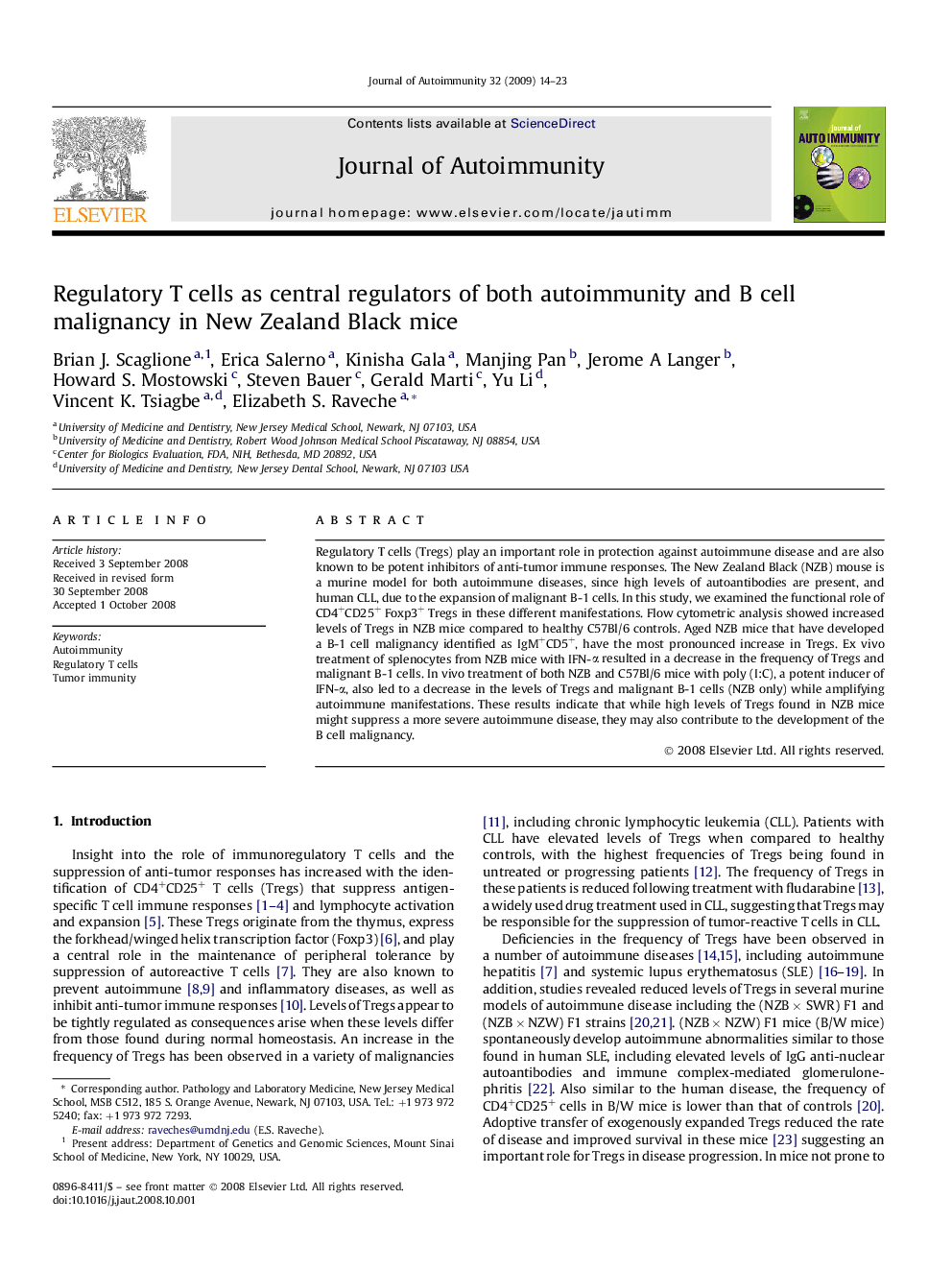| Article ID | Journal | Published Year | Pages | File Type |
|---|---|---|---|---|
| 3368286 | Journal of Autoimmunity | 2009 | 10 Pages |
Regulatory T cells (Tregs) play an important role in protection against autoimmune disease and are also known to be potent inhibitors of anti-tumor immune responses. The New Zealand Black (NZB) mouse is a murine model for both autoimmune diseases, since high levels of autoantibodies are present, and human CLL, due to the expansion of malignant B-1 cells. In this study, we examined the functional role of CD4+CD25+ Foxp3+ Tregs in these different manifestations. Flow cytometric analysis showed increased levels of Tregs in NZB mice compared to healthy C57Bl/6 controls. Aged NZB mice that have developed a B-1 cell malignancy identified as IgM+CD5+, have the most pronounced increase in Tregs. Ex vivo treatment of splenocytes from NZB mice with IFN-α resulted in a decrease in the frequency of Tregs and malignant B-1 cells. In vivo treatment of both NZB and C57Bl/6 mice with poly (I:C), a potent inducer of IFN-α, also led to a decrease in the levels of Tregs and malignant B-1 cells (NZB only) while amplifying autoimmune manifestations. These results indicate that while high levels of Tregs found in NZB mice might suppress a more severe autoimmune disease, they may also contribute to the development of the B cell malignancy.
